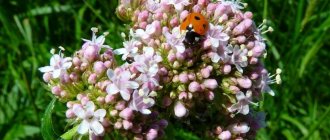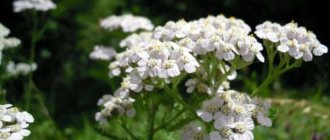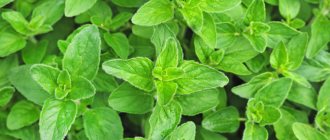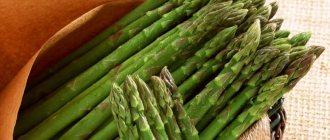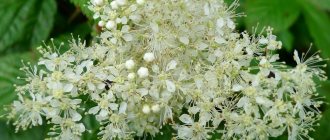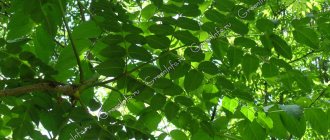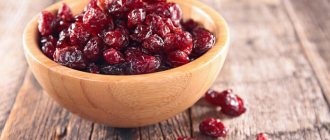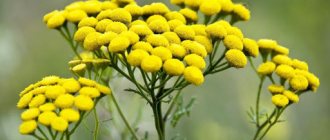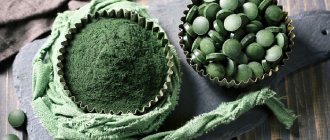Verbena officinalis is a perennial herbaceous plant. Belongs to the verbena genus (Verbena) of the verbena family (Verbenaceae). In official medicine, the plant is considered poisonous, but in folk medicine this property is not mentioned.
Verbena officinalis was deeply revered in ancient Greece and Rome. This can be judged even by the names with which it was called: “Tears of Isis”, “Blood of Mercury”, “Grass of Hercules”. It was used to crown priests during sacrifices. The Druids were familiar with her.
The plant mainly gained its popularity as having occult and magical properties. The beneficial and medicinal properties of verbena were especially widely appreciated in the Middle Ages, when almost all diseases were treated with its help. It was believed that it protected against any infection, which made it a valuable remedy during the epidemics that raged in those days.
Although the benefits of verbena officinalis are recognized in official medicine, it is currently almost not used, since more effective pharmaceutical preparations have been obtained.
Verbena officinalis has been used in folk medicine for the treatment of blood vessels, respiratory organs, liver, spleen, diseases of the female genital area, in dermatology, etc. It has a hematopoietic and restorative effect.
Verbena officinalis is used as a raw material to obtain essential oil, the aroma of which is reminiscent of camphor, which also has medicinal properties. In addition, the substance citral, used in medical practice, is obtained from verbena essential oil.
The plant is also used in cooking. It is used as a seasoning for pickling and salting vegetables. Verbena officinalis herb, collected during flowering, is drunk as a tea substitute.
Botanical description
The stem is slender, erect, tetrahedral. At the top the stem is branched and each shoot ends in a spike-shaped panicle.
Verbena leaves are opposite (2 leaves per node), coarse in texture. Differ from each other depending on location. The lower leaves are pinnately cut, petiolate, the middle ones are tripartite, the upper ones are sessile, entire. The higher up the stem, the smaller and rounder the leaves.
Verbena flowers are tiny, tubular, with five uneven petals. Light purple, they are collected in spike-shaped inflorescences that develop from the axils of the middle and upper leaves. It blooms from June to September.
Fetus. In autumn, the flowers are replaced by small nuts (4 nuts per flower) up to 2 mm in size. The bolls are elongated and reddish-brown. Verbena officinalis seeds are spread by wind and birds.
Collection and preparation
For medicinal purposes, the entire aerial part is harvested, less often only the leaves of verbena officinalis. Collection is carried out during flowering, in dry, sunny weather, not too early, after the dew has dried.
Dry outdoors in the shade, under a canopy or indoors with good air ventilation, spreading it in a thin layer, remembering to turn it over periodically.
Finished dried raw materials of verbena officinalis are stored in bags and boxes made of natural materials in a dry, well-ventilated area. Shelf life – 2 years.
Where does it grow?
There is no exact information about the origin of verbena. Many are inclined to consider Europe to be the birthplace of this ancient plant. For many places, verbena is invasive - it has a high ability to quickly adapt to new conditions. In meadows, fields, pastures, in abandoned places, on dry river banks, near ruins, medicinal verbena grows everywhere - wild plants are extremely unpretentious. It only does not tolerate severe frosts. Loves sun, warmth and slightly moist soil.
It is found from the Mediterranean Sea to Japan and China, in Russia - from the Urals to the Caucasus. The main condition is a temperate or tropical climate.
Chemical composition
Active ingredients of verbena officinalis:
- iridoids, simply put, bitters (aucuban, loganin, verbenaline, gastatoside);
- a large number of flavonoids (apigenin, scutellarein, luteolin);
- phenolic acid derivatives (verbascoside);
- alkaloids (adenosine);
- citral;
- ursolic acid;
- caffeic acid;
- beta-carotene;
- tannins;
- saponins;
- minerals, macro- and microelements (potassium, phosphorus, calcium, magnesium, zinc);
- essential oils.
Use in folk medicine
Despite the fact that verbena is endowed with too many magical and symbolic meanings, its therapeutic effectiveness is confirmed by extensive scientific research. Hippocrates also recommended it for the treatment of infertility.
The beneficial properties of verbena were noted by Hildegard of Bingen (St. Hildegard), a German nun, author of works on medicine, who lived in the 12th century. She extolled the virtues of bitter aromas.
The medicinal properties of the herb Verbena officinalis have been known to people for a long time, because its use for medicinal purposes dates back a thousand years. Unlike the intuitive experience of traditional healers, science meticulously studies the composition of each plant. Verbena officinalis, the use of which in folk medicine was previously limited to a narrow list of diseases, today is one of the most powerful medicinal herbs. And the list of ailments it treats has expanded significantly.
Atherosclerosis
Verbena perfectly cleanses blood vessels from low-density cholesterol plaques. Blood circulation is significantly improved and the risk of cardiovascular diseases is reduced.
Insomnia
Verbena herb has a mild sedative effect and is indicated for people suffering from insomnia. Research has shown that the sleep-inducing compound in verbena is verbenaline.
Cough
The components of this herb have secretolytic and expectorant properties and promote mucus production. They loosen phlegm, relieve congestion and soothe pain when coughing. Moreover, citral kills bacteria located on the mucous membrane of the respiratory tract.
Skin diseases
Tissue restoration is a complex process that can be caused by various factors. Apigenin and other flavonoids present in verbena extract have powerful anti-inflammatory properties. The tincture and decoction are used externally for purulent, infectious and allergic skin diseases - rashes, acne, scabies, ulcers, eczema, neurodermatitis, psoriasis, furunculosis, as well as difficult-to-heal wounds.
Migraine
Thanks to the main active component - a glycoside with a calming effect, discomfort caused by severe headaches and migraines is suppressed.
Menstrual irregularities
Amenorrhea, dysmenorrhea, premenstrual syndrome and menopausal mood swings have long been treated with this feminine herb. “The seventh herb of Venus” is one of the many “talking” names of verbena.
Colds and flu
Treatment of infectious diseases is becoming a growing challenge as pathogens rapidly become resistant to existing antibiotics. The antimicrobial potential of verbena stems, leaves and roots against 24 strains of gram-positive and gram-negative bacteria was studied. The stems were the most potent against all strains. Their activity against Staphylococcus aureus and Pseudomonas aeruginosa was higher than that of the antibiotic amoxicillin.
Fatigue and nervous tension
The use of verbena officinalis for fatigue relaxes the nervous system, reduces the level of stress hormones, and prevents symptoms of anxiety and depression.
Cystitis, urethritis, gout
Due to its diuretic properties, verbena herb is used as a remedy for fluid stagnation in the body and gout. The arbutin it contains acts as an antibacterial agent against cystitis and urethritis.
Stomach upset, heartburn
The herb Verbena officinalis stimulates the secretion of gastric juice, especially bile, which leads to better absorption of food. This beneficial effect on the digestive tract is explained by the presence of bitter glycosides in it.
Lactation, sexual dysfunction
Verbena increases milk production in a nursing mother. This plant is also a powerful natural aphrodisiac.
Alzheimer's disease
When studying aqueous extracts of Verbena officinalis, it turned out that the components of the plant have a neuroprotective effect. This can slow down the progression of the disease and protect neurons from damage.
Similar species
When purchasing and preparing verbena officinalis, you should pay special attention to the fact that the name “verbena” is present not only in plants (species) from the genus Verbena. In the verbena family (Verbenaceae), to which verbena officinalis belongs, it is:
- lemon verbena – Aloysia citrodora;
- Nashia inaguensis,
- Phyla alba;
- fake verbena – Glandularia;
- bush verbena –
Plants belonging to other families are also called “verbena”, these are:
- sweet Verbena-tree – Backhousia citriodora;
- abronia (Sand-verbenas) –
In addition, “verbena” is referred to in their names
- Cordia verbenacea;
- verbena sage – Salvia verbenaca;
- Verbesina,
which also belong to other families.
All of the listed plants are separate species, not related to each other or to Verbena officinalis. Each of them has its own personal beneficial and medicinal properties.
To purchase verbena officinalis, you should be guided by its Latin name, and when collecting it, first carefully study the description of the plant and photo.
Verbena tea
Traditionally, verbena is used as a medicinal tea. Despite the numerous beneficial properties of verbena tea, the aroma and bitter taste of this drink require some getting used to.
Simple to prepare but effective, verbena tea is prepared by steeping two tablespoons of raw tea in 250 ml of boiling water. Pour boiling water over the herb, leave for 5-7 minutes, filter and drink after meals to improve digestion, and before bed to combat insomnia. Tea with verbena, drunk in the morning, improves mood, calms nerves, and balances mood swings.
Scientists suspect that in combination with other herbs the strength of the active ingredients of verbena is enhanced or the components of other plants are activated. This is not a new, but still unexplored phenomenon in herbal medicine. So combine verbena with other herbs more often.
A little history
This plant has a rich history; many legends are associated with it. The Latin name of the plant is of Celtic origin, which is not surprising, given the reverent attitude of the Celtic Druids to verbena. And, for example, the German name is a literal translation of the name of the plant that Dioscorides gave it (sideros - iron), although the plant contains practically no iron. According to German doctors, it was the best remedy against injuries from iron weapons, and it was added when smelting iron.
The ancient Egyptians called it “Tears of Isis”; bunches of the plant were burned at celebrations dedicated to this goddess. In addition, it was used as a wound healing agent for wounds and cuts. Already in Indo-Germanic ceremonies, verbena was used to cleanse sacrificial stones or the surface of the altar.
In ancient Greece, she was associated with the goddess of the dawn, Eos. Ancient doctors used it for epilepsy, fever, and skin diseases. Pliny classified it as one of the most famous plants of the flora of the Roman Empire. Bunches of this herb were placed on the altar in the temples of the god Jupiter. The Romans burned bunches of grass to sanitize rooms, as well as to treat many diseases.
In ancient times, remedies made from verbena were often used to treat snake bites and diarrhea. At the same time, verbena root was chewed to strengthen one's teeth and gums. In addition, the roots were added as an ingredient to all kinds of love-bewitching drinks.
It is interesting that the verbena herb served for different purposes - a love potion for medieval witches and at the same time a remedy for fighting witches, used to remove damage.
In the Middle Ages, it was a means of spells and witchcraft, but not only. Hildegard of Bingen wrote in her writings that verbena helps with many diseases, and Paracelsus, given his craving for mysticism, also could not ignore this plant.
Verbena, as a popular medicinal plant, was brought from Europe to North America by the Puritans. Currently, these herbs are common in North America among numerous American verbenas.
In the 16th and 17th centuries, it was an important remedy in the treatment of headaches, eye inflammation, jaundice and cough. But at present, the information is quite contradictory: from complete denial of medicinal properties to the most enthusiastic reviews.
Verbena tincture
The advantage of alcohol tinctures is that they are absorbed into the blood faster and act immediately. To prepare the tincture, pour 50 g of herb into 500 ml of vodka. Soak for 3 weeks in a dark place. Strain and store in a dark glass bottle. Take 1 teaspoon three times a day before meals.
- Verbena tincture has a diaphoretic, antipyretic, and tonic effect.
- The tincture can be used for compresses for bruises and sprains.
- Verbena tincture is used for blood vessels: to cleanse them of deposits on the walls.
Growing on site
The soil for growing Verbena officinalis should be well permeable and not very heavy, and the place should be sunny.
Reproduction
Verbena officinalis L.
Seeds are sown in late autumn before winter or early spring. The seeding depth is about 1 cm, the distance between rows is 50-60 cm. Plant care consists of watering and loosening. They tolerate replanting well, so they can be “moved around the site” not only in the spring.
Advice. In the Non-Black Earth zone, Verbena officinalis often die in winter, but they begin to regenerate from fallen seeds. Therefore, if this happens, then do not rush to dig up the area, wait for the verbena shoots to appear and transplant them to the chosen place. Verbena can be placed in a mixborder or in a separate group. The germination of seeds does not last long, so it is better not to store them for a long time. Plants recover well after cutting raw materials, so they are decorative almost the entire season.
Verbena essential oil
Once extracted, high quality verbena oil has a chemical composition that combines several powerful antioxidant components such as nerol, citral and verbascoside. Like other essential oils, it is extracted from the leaves of the plant through steam distillation.
For massage
- Apply 2-3 drops of verbena oil to your temples and massage. This will soothe headaches and improve sleep.
- Massaging the abdominal area will relieve anxiety and improve digestion.
- Massage with verbena oil of the chest, in particular the area of the thymus gland, relieves fatigue, improves immunity, and fights allergies.
For Bath
Dissolve 5 drops of essential oil and a handful of coarse salt in a bath of water. It helps fight rheumatic pain and muscle spasms.
Contraindications for use
Like other medicinal plants, verbena has some contraindications for use. These include:
- Pregnancy - the use of verbena can provoke an increase in uterine tone.
- Stomach diseases with low acidity.
- Cholelithiasis.
- Children under 14 years of age.
In addition, the individual characteristics of the body and the possibility of developing an allergic reaction should be taken into account. To ensure that the medicine does not cause harm to health, you can take it only under the supervision of a doctor.
Application in cosmetology
Verbena is valued in cosmetology for its regenerating and antiseptic properties for the face and body. It can remove toxins, fight oily skin, prevent the formation of stretch marks and counteract cellulite.
The cosmetic industry produces alcohol-glycerin extract of verbena, which restores skin tone and elasticity, cleanses pores, and removes age spots.
You can also prepare a beauty product from verbena at home.
3-4 tbsp. Fill spoons of herbs with water (500 ml) and put on fire. Bring to a boil and cook for 3 minutes. Cool and strain. After a shower, gradually pour the verbena decoction over yourself, starting from your head: first onto clean hair, then onto your body. There is no need to wipe yourself off after this.
This procedure has both a cosmetic and therapeutic effect.
Verbena officinalis – pharmaceutical preparations
Verbena officinalis can be bought at a pharmacy. Both the herb itself and preparations based on it are available for sale. It is often included in various herbal preparations.
The dietary supplement “Verbena Clean Vessels” is available in the form of capsules that are convenient for use.
Another pharmaceutical preparation based on verbena is an alcohol tincture of the herb with a detailed application diagram.
Verbena essential oil is sold in pharmacies for rubbing, compresses, massage, baths, aromatherapy and enrichment of cosmetic products.
Types and varieties
The verbena genus is quite numerous and, in addition to verbena officinalis, includes 100 species, including:
- Buenos Aires verbena – Verbena bonariensis L.;
- California verbena – Verbena californica Moldenke;
- spear verbena (blue) – Verbena hastata L.;
- Verbena intermedia Gillies & Hook.;
- Kuhlmann's verbena – Verbena kuhlmannii Moldenke;
- Lindbergh's verbena – Verbena lindbergii Moldenke;
- coastal verbena – Verbena litoralis Kunth;
- valerian verbena – Verbena valerianoides Kunth and others.
Among such a wide variety of species, only one species, verbena officinalis, is used as a medicinal plant.
Subspecies
Verbena officinalis is divided into several varieties and subspecies:
- Verbena officinalis var. africana (R.Fern. & Verdc.) Munir; Verbena officinalis subsp. africana R.Fern. & Verdc.;
Also, some sources refer to Verbena halei as a species of verbena.
Verbena officinalis. Latin name : Verbena officinalis L.
Verbena officinalis. Other names : iron ore, iron ore, red zirka, dry nephrosh, witchcraft plant, holy grass, tears of Juno.
